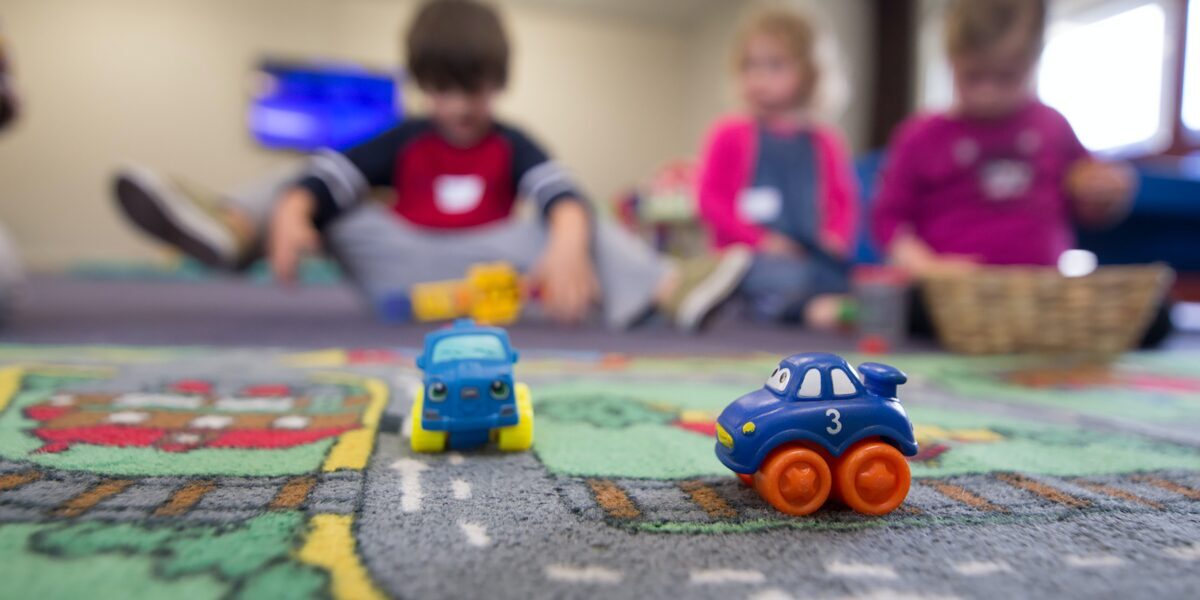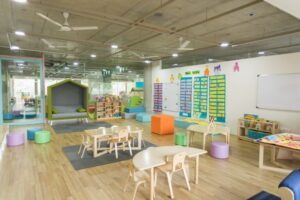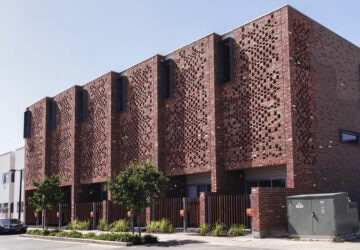
Planning and design guidelines for child care centres
Mitigating community disturbance by following the acoustic guidelines for child care centres
As many of us continue working from home, local residential noises become frustratingly more obvious, especially as we hop in and out of endless Zoom meetings throughout the day. Dealing with your own children is one thing. However, if you’re located near a child care centre, early learning centre or school that’s a different matter entirely. Children are noisy. A group of children is a lot louder than just one. And when children get bored, the volume can increase even more.
Now, combine this with the need to have child care centres in the heart of communities and residential areas that are easily accessible to families. Let’s add generous play spaces outside, vehicle noise from pickup and drop-off and the kids themselves to a site that is typically open from 7 am to 6 pm, Monday to Friday for up to 52 weeks per year.
As you can imagine, when it comes to noise management and acoustic control in buildings, the location, design, planning and ongoing running of a child care centre can be challenging. This applies to both internal noise within the centre, as well as noise emitted into the surrounding environment.

As acoustical consultants we advise clients, such as property developers, on both the internal and external noise impacts as they plan new facilities. While internal acoustic design to control the noise from multitudes of children is a challenge in itself, for this article we will be focussing on the environmental noise from child care centres.
What we use as planning and design guidelines for child care centres
At Resonate Consultants, we use industry guidelines to base our Noise Impact Assessments (NIA) for child care centres upon. NIA usually include information around protecting the acoustic privacy of nearby residents and offer recommendations to ensure child care centres don’t generate unacceptable noise.
NIA also provide guidance for the minimum requirements for adequate space, variety, diversity and play opportunities for children to help reduce the noise levels and for the protection of children from excessive noise for example from roads, industrial premises, aircraft or rail operations.
We recently advised a residential building complex on the addition of a new child care centre on site, when it had originally been assigned for commercial tenancies. With apartments overlooking outdoor areas of the proposed child care centre there was much potential for noise to be an issue for residents.
After completing the NIA, the developer included noise barriers in locations height and orientation to specifically screen neighbouring apartments to show compliance with industry standards.
Challenges for child care centre design
Just like classroom acoustics standards, one hurdle some developers may face is that the noise criteria for child care centres are typically based on existing noise levels in the area. For example, if a child care centre is proposed in an urban area versus a quiet residential area, it can be easier to meet guidelines based on the higher existing noise levels already recorded in urban areas as opposed to rural, quieter areas.
Guidelines for child care centres around managing noise
Here are some ideas around how to manage noise when it comes to child care centres which are taken from the Association of Australasian Acoustical Consultants Guideline for Child Care Centre Acoustic Assessment.
Building design
Sleeping and outdoor play areas are to be positioned away from external noise. This can be achieved by a “U” shaped or “L” shaped layout, which means the building itself acts as a noise barrier.
All operable windows need to avoid a direct line of sight to neighbouring noise sensitive areas, whilst access ramps are to be located away from neighbours.
Additionally, the following should be implemented:
- self-closing gates with soft closure hinges
- select low noise air-conditioning condensers
- and minimal speed humps
- smooth car park surfaces and accessways
Outdoor play areas
In a child care centre, outdoor play areas should be located to minimise the noise impact on neighbours.
It’s also recommended to maximise the separation between the façade of any neighbouring residential premises and active outdoor play areas (as opposed to passive activities such as painting, drawing etc). For ‘green field’ sites, consideration should be given to surrounding the outdoor play area with buildings used to either totally or partially provide a barrier where practical. Storage sheds, covered shade areas or other buildings with solid roofs can be a great way of providing an acoustic barrier to loud outdoor play areas.
Reduce the amount of hard-paved areas and pathways to minimise reverberant noise levels.
Boundary fences
The standard height for a boundary fence is 1.8 metres. Higher fences that are solid and free from visible gaps will reduce the noise impact for ground floor receptors.
Check with your local council for correct advice on height fences.
Limiting the number of children outside
Limit the number of children within the outdoor play area at any one time as a way to reduce noise. For example, ‘a reduction in the number of children by half will reduce the noise impact by approximately three decibels,’ according to the Association of Australasian Acoustical Consultants’ planning and guidelines for child care centres.
Drop off and pick up
Noise control measures should minimise the impact to neighbours that come from general arrival and departure noise such as car doors slamming and the sound of parents and children.
These include situating arrival and departure access points away from neighbours or the provision of acoustic fencing and/or landscaping.
How to factor in planning and design guidelines for child care centres
It’s not always easy to address these requirements but it’s crucial you do so from the start to avoid unnecessary expenditure down the track.
When it comes to noise levels, it’s best to consult with your architect or acoustic consultant early on, preferably in planning stages, as there are many quick and easy ways to ensure the design and location can meet these guidelines.
Early engagement will mean you’re not faced with potential costly design features that need to be added after the facility is complete, as well as angry neighbours!
For award winning acoustic consulting to help you plan your acoustic control in education buildings across Australia, contact Resonate Consultants today.




